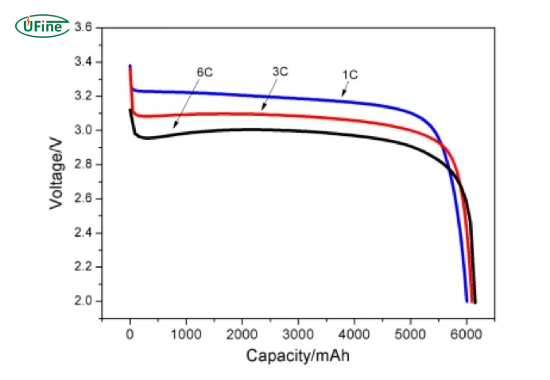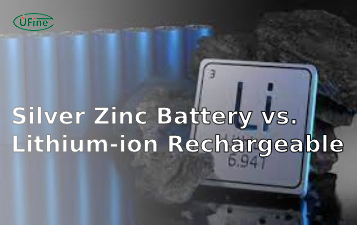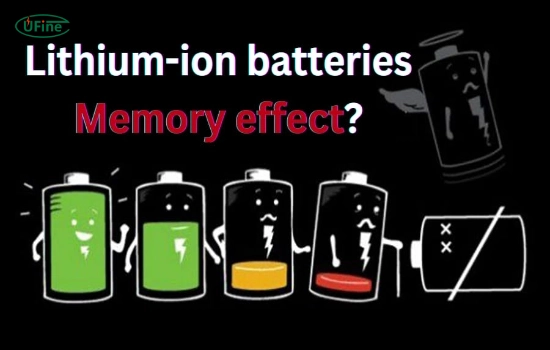
- Part 1. What is a lithium-ion battery and why discharge depth matters?
- Part 2. What does "fully discharging" really mean?
- Part 3. Why 0% discharge destroys lithium batteries?
- Part 4. Optimal lithium battery maintenance: The 20-80% rule
- Part 5. Memory effect myths and battery calibration
- Part 6. How to revive a dead lithium battery? (3-Step Safety Guide)
- Part 7. Battery Management Systems: Your electronic safeguard
- Part 8. Accident recovery protocol
- Part 9. Quantifying battery longevity
- Part 10. Advanced FAQs about lithium battery discharge
Lithium-ion batteries have revolutionized modern technology, powering everything from smartphones to electric vehicles. However, questions often arise about properly maintaining these batteries for optimal performance and longevity. One common query is: “Is it bad to fully discharge a lithium-ion battery?” In this comprehensive guide, we’ll explore the electrochemical science behind lithium-ion degradation, quantify the real-world impact of discharge practices, and provide actionable maintenance strategies backed by battery research studies.
Part 1. What is a lithium-ion battery and why discharge depth matters?
Lithium-ion (Li-ion) batteries operate through complex electrochemical processes where lithium ions shuttle between graphite anodes and metal oxide cathodes (typically NMC or LFP chemistry). Their 3.0V-4.2V/cell voltage range is critical because:
- Below 3.0V: Anode structure begins collapsing, causing irreversible lithium plating
- Above 4.2V: Cathode oxidizes, releasing oxygen and triggering thermal runaway
Depth of Discharge (DoD) directly impacts cycle life – each 10% reduction in DoD can double cycle longevity according to Journal of Power Sources studies.
Part 2. What does “fully discharging” really mean?
True full discharge occurs when voltage drops below 3.0V/cell – far beyond your device’s 0% display. This deep discharge zone triggers irreversible damage through three mechanisms:
- Copper dissolution: Current collectors dissolve below 2.5V, forming conductive shunts
- SEI layer breakdown: Protective anode coating degrades, consuming active lithium
- Electrolyte reduction: Organic solvents decompose into flammable ethylene gas

University of Michigan research shows batteries discharged to 2.0V lose 15% capacity in just one cycle.
Part 3. Why 0% discharge destroys lithium batteries?
- Structural collapse: At <2.5V/cell, graphite layers exfoliate, reducing anode capacity by 30-40%
- Gas generation: Electrolyte decomposition produces CO₂ and C₂H₄, swelling cells at 0.5mL/Ah/day
- BMS failure cascade: Repeated triggering wears out protection MOSFETs, increasing failure risk by 8×
Getting battery discharge warnings? Learn immediate solutions.
Part 4. Optimal lithium battery maintenance: The 20-80% rule
| Discharge Depth | Cycle Life | Capacity After 2 Years | Degradation Rate |
|---|---|---|---|
| 100% (0-100%) | 300-500 cycles | 60-70% | 1.8%/month |
| 50% (30-80%) | 1,200-2,000 cycles | 85-90% | 0.5%/month |
- Thermal management: Maintain 15-25°C operating temperature – every 8°C above 30°C halves lifespan
- Storage protocol: 50% SOC at 10°C reduces aging to 2% annually vs 35% at full charge
Part 5. Memory effect myths and battery calibration
Unlike nickel-based batteries, Li-ion has no memory effect. However, periodic calibration helps:
- Discharge to manufacturer’s low-voltage cutoff (typically 3.0V)
- Immediately charge to 100% at 0.5C rate
- Perform quarterly for accurate fuel gauging
Note: This is not “deep cycling” – stop at BMS cutoff, not true 0%.
Part 6. How to revive a dead lithium battery? (3-Step Safety Guide)
- Diagnose first: Measure open-circuit voltage – below 1.5V indicates permanent damage
- Constant-voltage charging: Apply 3.0V at 0.05C for 12 hours (e.g., 50mA for 1000mAh cell)
- Recovery assessment: If voltage stabilizes >3.3V after 2 hours, switch to normal charging
Critical safety note: Discard batteries showing >2% volume increase or surface temperature >45°C during recovery.
Part 7. Battery Management Systems: Your electronic safeguard
Modern BMS provide multi-layer protection:
- Voltage monitoring: Per-cell measurement with ±2mV accuracy
- Cutoff thresholds: Discharge: 2.8-3.0V/cell, Charge: 4.25-4.35V/cell
- Balancing systems: Passive (resistor-based) or active (capacitor/inductor) cell equalization
EV batteries contain redundant BMS controllers with separate power supplies for critical safety.
Part 8. Accident recovery protocol
If discharged below safe voltage:
- Initial assessment: Check for swelling using precision calipers (>1mm expansion = discard)
- Controlled recharge: Use current-limited supply (max 0.1C) with temperature monitoring
- Capacity testing: After recovery, perform full cycle test – >20% loss indicates replacement need
Professional recovery services use argon-filled glove boxes for critically damaged cells.
Part 9. Quantifying battery longevity
Lifespan depends on multiple factors:
| Application | Standard Cycles | Optimal Cycles | Calendar Life |
|---|---|---|---|
| Smartphones | 500 (80% DoD) | 1,200 (50% DoD) | 2-3 years |
| EV Batteries | 1,000 (100% DoD) | 3,500 (70% DoD) | 8-12 years |
| Grid Storage | 4,000 (80% DoD) | 15,000 (50% DoD) | 15-20 years |
MIT research shows proper maintenance can extend EV battery life beyond 500,000 miles.
Part 10. Advanced FAQs about lithium battery discharge
Why do some manufacturers recommend monthly full discharges?
This calibrates capacity estimation circuits, not the battery itself. Newer “coulomb counting” BMS eliminate this need.
How does fast charging affect discharge tolerance?
Batteries charged at >1C rates develop 20% thicker SEI layers, reducing deep-discharge resilience by 30%.
Can battery chemistry affect discharge limits?
LFP batteries tolerate 2.5V discharges better than NMC, but suffer 15% lower energy density.
Do power banks need different discharge protocols?
Yes – multi-cell packs require balanced discharge. Imbalanced cells can reverse-charge below 2.0V during deep discharge.
What emergency tools should I have for discharged batteries?
Keep a digital multimeter (voltage check), thermal camera (>70°C indicates failure), and Class D fire extinguisher.
How do low-temperature conditions affect discharge safety?
At -20°C, discharge below 20% SOC can cause lithium metal plating, permanently reducing capacity by 5-10% per incident.
Related Tags:
More Articles

What is the Difference Between Silver Zinc Battery vs. Lithium-ion Rechargeable?
Compare silver zinc and lithium-ion rechargeable batteries: energy density, cycle life, safety, cost, and uses in drones, medical devices, EVs, and electronics.
What are Watts and Watt Hours in Battery?
Understand watt vs watt-hour in batteries: key differences, how to calculate capacity, and why they matter. Includes free comparison table.
Best 10 Blood Pressure Monitor Battery Review: Finding the Most Reliable
Are you looking for a reliable Blood Pressure Monitor battery? Here is a complete guide with the top 10 best blood pressure monitor batteries.
Bluetooth Headphone Battery Guide: All You Need to Know
Maximize headphone battery life with expert tips! Learn how to charge, check, troubleshoot, and choose the best bluetooth headphone battery in 2025.
LiFePO4 Battery VS. Lithium-ion Polymer Battery: Which One Is Best?
Comprehensive comparison of LiFePO4 vs Lithium Ion Polymer batteries: energy density, safety, lifespan, cost. Find out which battery suits your needs in 2025.



